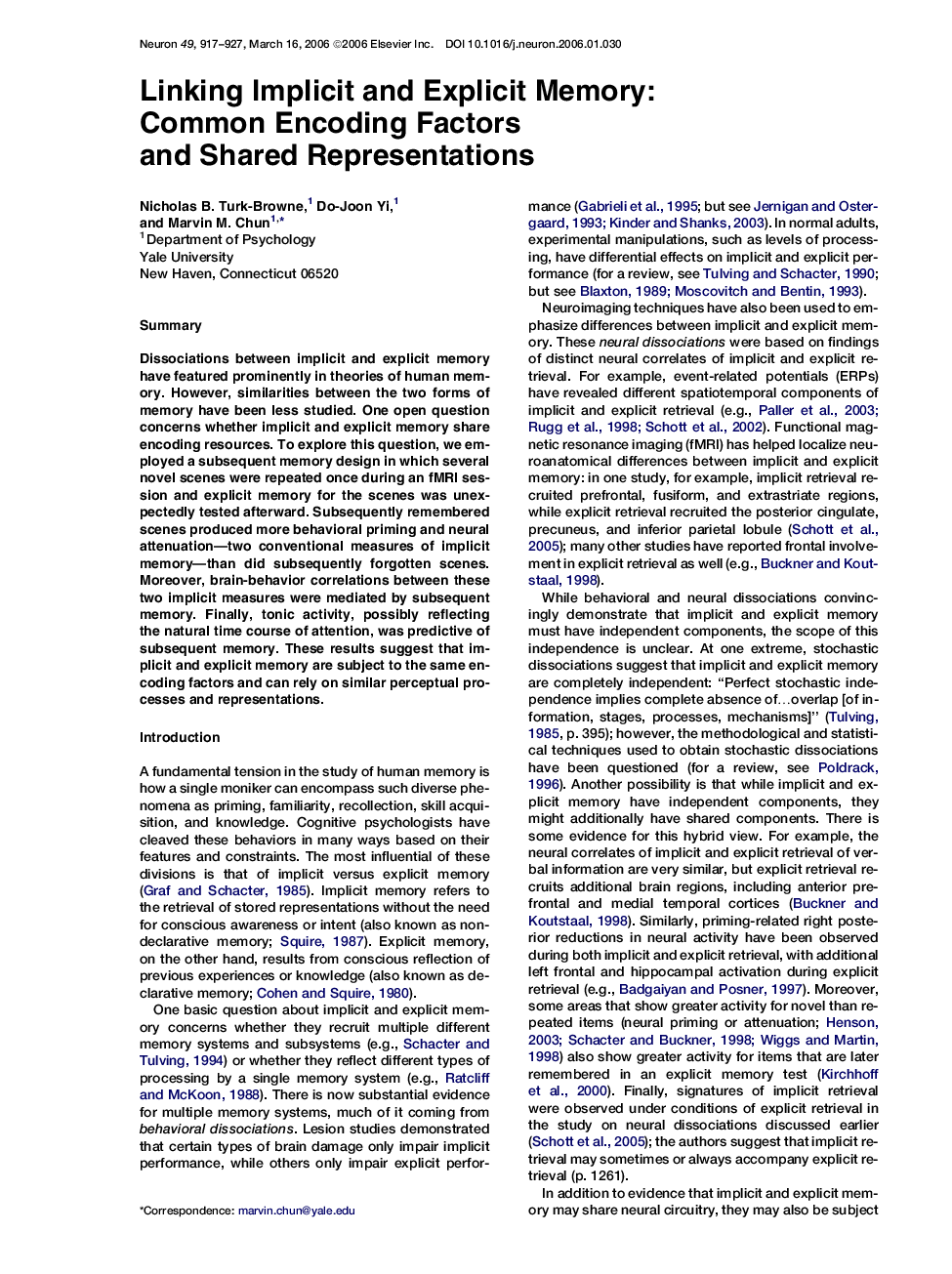| Article ID | Journal | Published Year | Pages | File Type |
|---|---|---|---|---|
| 4323337 | Neuron | 2006 | 11 Pages |
SummaryDissociations between implicit and explicit memory have featured prominently in theories of human memory. However, similarities between the two forms of memory have been less studied. One open question concerns whether implicit and explicit memory share encoding resources. To explore this question, we employed a subsequent memory design in which several novel scenes were repeated once during an fMRI session and explicit memory for the scenes was unexpectedly tested afterward. Subsequently remembered scenes produced more behavioral priming and neural attenuation—two conventional measures of implicit memory—than did subsequently forgotten scenes. Moreover, brain-behavior correlations between these two implicit measures were mediated by subsequent memory. Finally, tonic activity, possibly reflecting the natural time course of attention, was predictive of subsequent memory. These results suggest that implicit and explicit memory are subject to the same encoding factors and can rely on similar perceptual processes and representations.
